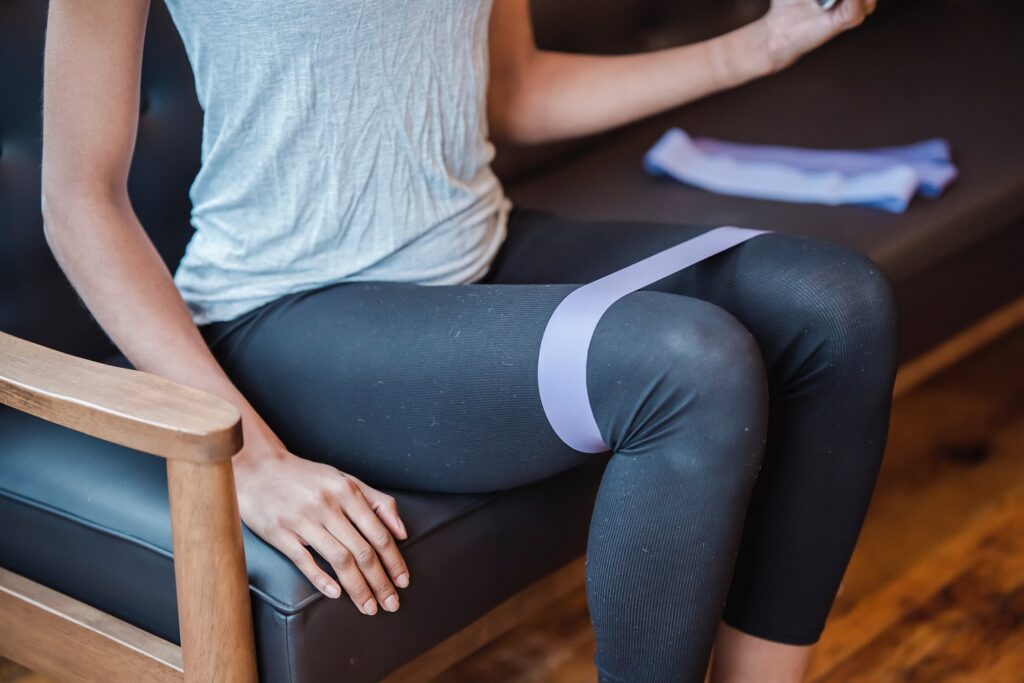Cross-training is an essential component of a runner’s training routine. It involves incorporating different forms of exercise to complement your primary sport, which, in this case, is running. While many runners focus on cardio and strength training, resistance bands offer a versatile and effective tool for enhancing both strength and flexibility. In this article, we’ll explore the benefits of resistance bands in runner’s cross-training and provide insights into how to incorporate them effectively into your routine.
The Role of Cross-Training in Running
Before delving into the advantages of resistance bands, it’s crucial to understand the importance of cross-training for runners. Cross-training offers several benefits:
- Injury Prevention: Cross-training reduces the risk of overuse injuries by allowing you to use different muscle groups and vary the stresses placed on your body.
- Improved Muscle Balance: Running primarily engages specific muscle groups, potentially leading to muscle imbalances. Cross-training helps address these imbalances by involving different muscles.
- Enhanced Strength and Endurance: Cross-training exercises can improve overall strength and endurance, which can translate to better running performance.
- Mental Refreshment: Engaging in different activities prevents boredom and burnout, keeping you mentally motivated and refreshed.
- Faster Recovery: Lower-impact cross-training activities can be incorporated during rest days or recovery periods, aiding in muscle recovery without overloading the joints.
The Benefits of Resistance Bands
Resistance bands are elastic bands or tubes that provide varying degrees of resistance when stretched. They come in a range of thicknesses and resistances, making them suitable for individuals at all fitness levels. Here are the key benefits of incorporating resistance bands into your runner’s cross-training routine:
1. Strength Development:
Resistance bands offer a unique way to build strength. They provide constant tension throughout an exercise, targeting both the concentric (muscle shortening) and eccentric (muscle lengthening) phases of a movement. This can lead to balanced muscle development and enhanced strength, particularly in areas important for runners, such as the glutes, quadriceps, and hip flexors.
2. Improved Flexibility:
Stretching with resistance bands can increase your flexibility. Dynamic stretches using resistance bands can help improve your range of motion and mobility, which is vital for maintaining good running form and preventing injuries.
3. Enhanced Muscle Activation:
Resistance bands activate stabilizing muscles that are often underused in traditional strength training exercises. This additional muscle activation can help improve your running biomechanics and reduce the risk of muscle imbalances.
4. Portability and Versatility:
Resistance bands are lightweight and portable, making them ideal for runners who may not have access to a gym. You can carry them in your bag and use them for a quick workout wherever you are, whether it’s at home, in a hotel room, or at the park.
5. Joint-Friendly:
Resistance bands offer a low-impact way to work your muscles, reducing the stress on your joints compared to traditional weightlifting. This can be particularly beneficial if you’re recovering from an injury or looking for exercises that are easier on your joints.
6. Cost-Effective:
Resistance bands are affordable and provide a cost-effective way to add variety and intensity to your workouts. They are a one-time investment that can last a long time.
7. Progressive Resistance:
As your strength and fitness levels improve, you can easily progress by using bands with higher resistance levels or by adjusting your band’s positioning to increase tension. This adaptability ensures that resistance bands can continue to challenge you as you get stronger.
Incorporating Resistance Bands into Your Cross-Training Routine
Now that you understand the benefits of resistance bands let’s explore how to effectively incorporate them into your runner’s cross-training routine:
1. Warm-Up:
Start your cross-training session with a dynamic warm-up using resistance bands. Perform exercises like leg swings, lateral leg raises, and hip circles to activate and mobilize your hip and leg muscles.
2. Strength Training:
Incorporate resistance band exercises into your strength training routine. Focus on exercises that target the muscles involved in running, such as squats, lunges, leg raises, and glute bridges. You can also use resistance bands for upper body exercises like rows and presses to maintain overall strength.
3. Flexibility and Mobility:
Use resistance bands for stretching and mobility exercises. Perform movements like leg stretches, hip flexor stretches, and shoulder mobility exercises using the bands. This will help improve your flexibility and range of motion.
4. Prehab and Rehab:
Resistance bands can be valuable tools for injury prevention (prehab) and rehabilitation (rehab). Incorporate band exercises that target weak or injury-prone areas, such as the IT band, Achilles tendon, or rotator cuff, as part of your routine.
5. Recovery and Activation:
On rest days or after a challenging run, use resistance bands for recovery and muscle activation exercises. These can include gentle stretching, foam rolling with band assistance, and band-assisted mobility work.
6. High-Intensity Workouts:
Add resistance bands to high-intensity interval training (HIIT) or circuit workouts to increase the intensity and challenge of your cross-training sessions. Combining bands with bodyweight exercises like squats, burpees, or push-ups can create a highly effective workout.
7. Gradual Progression:
As with any form of exercise, it’s essential to progress gradually when using resistance bands. Start with bands of lower resistance and increase it as you become stronger. Focus on maintaining proper form and control throughout each movement.
Sample Resistance Band Workout for Runners
Here’s a sample resistance band workout that targets key muscle groups for runners:
Warm-Up (5 minutes):
- Leg swings: 1 minute per leg
- Lateral leg raises: 1 minute per leg
- Hip circles: 1 minute
Strength Training (15-20 minutes):
- Squats with resistance band: 3 sets of 12-15 reps
- Glute bridges with resistance band: 3 sets of 12-15 reps
- Standing leg abduction with resistance band: 3 sets of 12-15 reps per leg
- Plank with leg lifts using resistance band: 3 sets of 12-15 reps per leg
Flexibility and Mobility (5-10 minutes):
- Hamstring stretch with resistance band: 1 minute per leg
- Hip flexor stretch with resistance band: 1 minute per leg
- Shoulder mobility exercises with resistance band: 2 minutes
Recovery and Activation (5-10 minutes):
- Foam rolling with band assistance: 3 minutes
- Gentle static stretching with resistance band: 2 minutes
Resistance bands are versatile and effective tools that can greatly benefit runners in their cross-training endeavors. By incorporating resistance band exercises into your routine, you can enhance strength, flexibility, and muscle activation while reducing the risk of injury and improving overall running performance. Whether you’re a novice runner or an experienced marathoner, resistance bands provide a cost-effective and accessible way to boost your training and keep your body in optimal condition. So, don’t overlook these simple yet powerful tools when planning your cross-training regimen as a runner.

